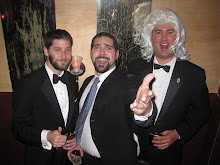The U.S. Treasury Department, charged with overseeing alcohol enforcement, estimated that by the mid-1920s, some 60 million gallons of industrial alcohol were stolen annually to supply the country's drinkers. In response, in 1926, President Calvin Coolidge's government decided to turn to chemistry as an enforcement tool. Some 70 denaturing formulas existed by the 1920s. Most simply added poisonous methyl alcohol into the mix. Others used bitter-tasting compounds that were less lethal, designed to make the alcohol taste so awful that it became undrinkable [...] By mid-1927, the new denaturing formulas included some notable poisons — kerosene and brucine (a plant alkaloid closely related to strychnine), gasoline, benzene, cadmium, iodine, zinc, mercury salts, nicotine, ether, formaldehyde, chloroform, camphor, carbolic acid, quinine, and acetone. The Treasury Department also demanded more methyl alcohol be added — up to 10 percent of total product. It was the last that proved most deadly.Amazing stuff. Is this where the phrase "pick your poison" comes from? I dunno. But I do know that I almost completely agree with the analysis by Megan McArdle from The Atlantic. Her blog entry in Asymmetrical Information reads:
This unfortunate story, if you think about it, is an ancestor to so many things that are currently going on. I think just like anything else it's important to note a few things. First, it's really not astonishing to me that our government did something as brutal as this. It's more important to me that we learn something from it and ensure our government knows it's pretty much unacceptable to start putting incrementally poisonous doses of formaldehyde in junk food. There are better ways of curbing the appetite of Bebe's kids in America.I wish I could say I found it surprising, but it seem to me to be of a piece with too many other brutalities in American law. We pass a law with the best of intentions, and find it doesn't work, and so we pass new regulations and policies designed to crack down on non-compliance, until we are brutalizing the population all out of proportion to the original good we were pursuing. Consider the way we have cracked down on pain medications, impeding the effectiveness of pain control for people in chronic agony out of the fear that somewhere, someone might be getting high.
Furthermore, I think we all can think of other activities that are currently illegal but seem pretty pointless to prosecute. Dare I say, pointless to the level that prosecution produces no greater good to the society than other more progressive alternatives?
I digress...
The reason this story relates so closely to this blog and cocktail making in 2010 is crystal clear. For starters, the application of science and the principles of chemistry in cocktails have become more frequent (albeit less for the reason of outright poisoning people). Now, I don't know very much about chemistry so this thought may seem a little ridiculous. But I am curious to know if any of the same principles and/or processes that were used by bootleggers (and, consequently, U.S. Treasury Department chemists) are used by anyone for today's alcohol experimentations in any capacity. Now be easy. I'm pretty sure Todd Thrasher from PX isn't playing with strychnine in his cocktails. I'm also not trying to take mixology to a whole new level or anything. Maybe this is over-simplifying the science here, but it is the poisonous properties of alcohol that makes us loopy after all.
It would just be a fascinating topic to explore.
Anyway, this sinister application of chemistry juxtaposed against the scientific renaissance in bartending we've seen in the past decade also kind of imparts some signal that our society has progressed. It may seem like a stretch but many times it feels like our society often flips aspects of its shadowy past around into a light-hearted, powerful or poignant symbol. In turn, as a relic, it helps to enrich the culture even more moving forward. Ok, so maybe I got too deep there...
Anyway, I think it should also be noted that the scientific approach to hooch has developed an aura of professionalism in cocktail-making for some parts of the industry. Maybe its a prestige that is long overdue. The once comical scientific-sounding term "mixology" or the professional-scientist-sounding "mixologist" somehow gained some degree of legitimacy.
The prohibition history of this story also relates more obviously in the speakeasy-style bar concepts have sprung up in cities like Washington D.C. (Have they peaked? Read Derek Brown's entry regarding Gossip Girl).
History is pretty crazy when you get down into it. And there's a great deal of history in the bar/booze industry. I guess you can tell I'll take any chance I get to learn and talk about it. If you'd like to expand on any of these ideas feel free to comment.





Just to clarify this post a bit: its obvious the science employed by the bootleggers and the Treasury Department is the science of distillation - and my guess is it's really a matter of leaving some of the congeners in the "heads" of the distillate in the heart of the distillate (i.e. what someone would drink). So my curiosity actually begins with any particular changes in the distillation process being done today that yields slightly different flavors, aromas, etc as possibly discovered by the battles from the Prohibition era. In history, funny things are discovered out of conflict and I take it this story is no different.
ReplyDelete